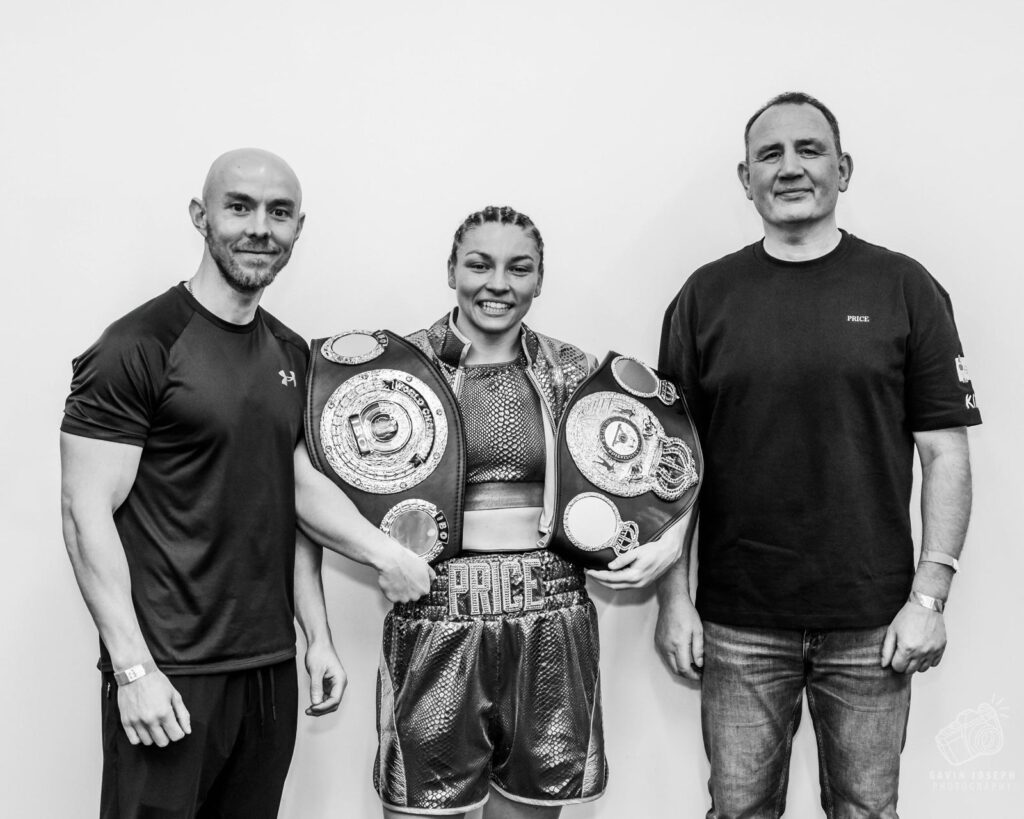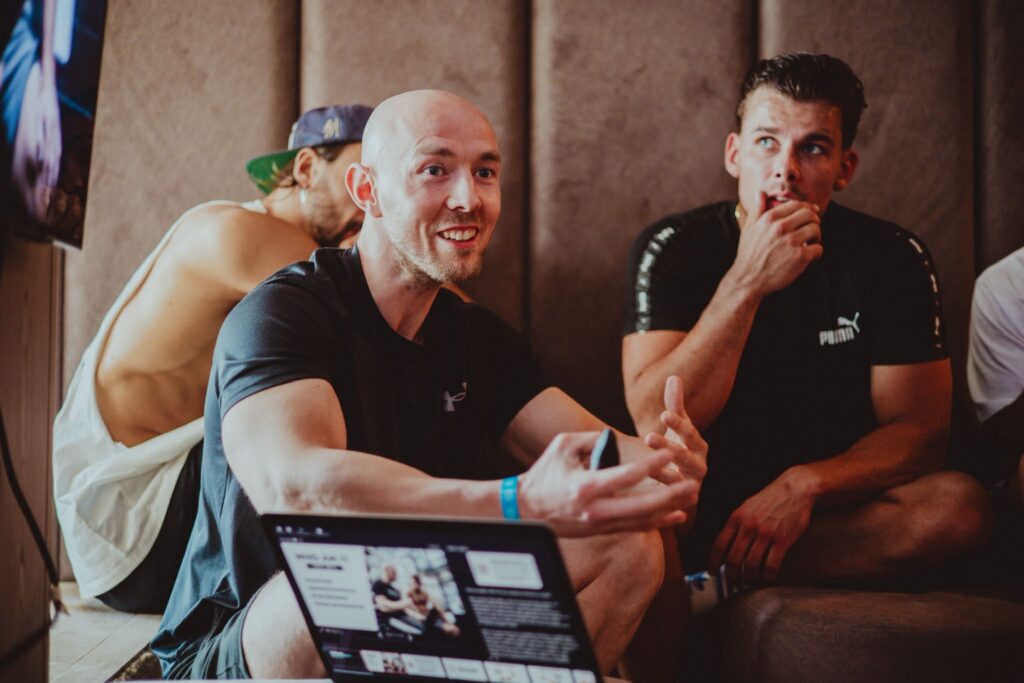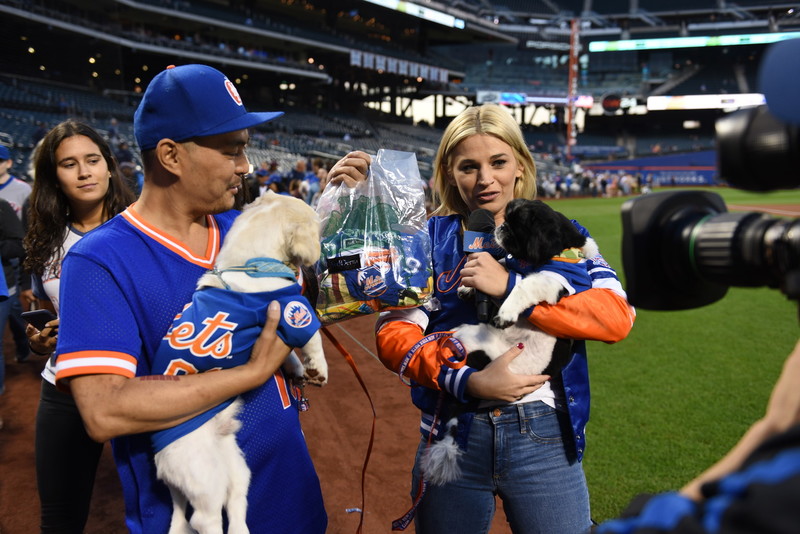From temperature testing boxers’ baths to flying out with them to Abu Dhabi, Pete Bell lifts the lid on his work feeding up top boxers.
Muhammad Ali’s ‘Fight of the Century’. Mike Tyson’s brutal 91-second dispatching of Michael Spinks. Katie Taylor and Amanda Serrano’s historic contest at Madison Square Garden. Boxing is known for its displays of power and strength, but the sport’s iconic moments are at the mercy of the scales and rely on a fine scientific art.
“(In other sports) nutrition is more about optimising things, but boxers really need you,” says performance nutritionist Pete Bell, who runs Qualified Nutrition. “A boxer can’t fight, can’t make weight, without a nutritionist.
“If they’re not making weight, they’re not getting paid, they can’t feed their families and pay their bills for that month if they don’t fight.”
Other athletes might want dietary support to optimise strength or speed – but in combat sports, the demands of weight classes make nutritionists a must-have. Since getting his MSc in sports nutrition, Bell has worked with hundreds of fighters including unified welterweight world champion Lauren Price, former Commonwealth and European super-featherweight champion Zelfa Barrett, and super-middleweight world champion Savannah Marshall.

“I’ve never been good enough to make it as a pro boxer, so what’s the next best thing? For me, it’s helping them and being part of the team going to the fights, being part of that environment – but I’m not getting punched in the head, so that’s a bonus!”
Read more: Boxing cutman Dr Ian Gatt reveals what it’s like to be in the corner of top fighters
Instead of getting in the ring, Bell’s job involves putting boxers through a painstaking diet programme. He talks Sidelines through an example where our imaginary boxer starts working with him eight weeks out from their fight and will weigh in the day before the bout.
The first phase is fat loss, achieved through a carefully handled calorie deficit. He tracks the breakdown of the boxer’s food to make sure they have enough protein and fats, and no valuable lean body mass and strength is lost – but the cuts can still be challenging.
“I hate that they come to me late and I’ve got no choice but to put them on so little food,” Bell admits, “but otherwise they’re not making weight.”
“Psychologically, starving a boxer – you feel very responsible for that. That’s almost (about) being brave enough to say no when you need to.” He recently refused to help a fighter lose 12 kilos in four weeks: “(I said) you shouldn’t do it yourself, but the reason why I’m not is I won’t sleep at night.”
After that gruelling fat loss, fight week is even more extreme. Boxers weighing in the day before a fight will have a target weight for the start of fight week that is slightly above their class limit. They will lose the extra pounds in time for the weigh-in, then bulk back up for the fight during an intense reload period of about 30 hours. To achieve this, a nutritionist’s job becomes scientific to a point most fans could not imagine.
“We’ve only got a few days, we’re not going to lose much body fat in that time,” Bell explains. “So what we do is we empty out the body of all its stores.”
Before weighing in, Bell explains how carbohydrates are cut – dropping not only the weight of glycogen, but the water that is stored with it. Fibre is slashed so that residue doesn’t build up in the intestines and add extra weight. Cutting salt tricks the body into storing less water to maintain its electrolyte balance. Even the actual weight of foods comes into play – Bell encourages boxers to swap in nutrient-dense foods, like raisins rather than blueberries.
An extraordinary level of scientific detail goes into making weight. Bell explains the technique of ‘water-loading’ in fight week – drinking about 100ml of water per kilo of bodyweight, around 7 litres a day for a middleweight fighter. This suppresses anti-diuretic hormone and tricks the body into losing more fluid, before cutting intake right down the day before weighing in. “The body doesn’t catch up straight away,” Bell explains, “so it’s still excreting more fluid.” That means more weight lost by the time the fighter hits the scales.
Lastly, boxers get a sweat on to shed the pounds. They can exercise in heavy layers or get in a sauna or bath. Bell supervises to make sure this is done safely, which brings an unexpected quirk of the job.
“The biggest danger when people are cutting weight is heat exhaustion and heatstroke. One of my roles is making sure they’re not making their baths too hot – so I’ve seen a lot of boxers in baths!”
After making weight comes a race to refuel before the fight. “I like to aim for around 10g of carbs per kilo of bodyweight in that reload. If you weighed 70kg, I’d aim for nearly 700g of carbohydrate, which is a ton of food.”
So what might a post-weigh-in menu from Bell look like? After the first hour, which is focused on fluids, fighters start with simple sugars like Jaffa Cakes, pineapple, and sweets. Next is chicken and rice with a pitta and wrap. After some jam on toast with sweets and a flapjack, fighters would hit an Italian or Wagamamas for a meal, and a few hours later dig into a giant bowl of cereal. All of this, he explains, is separated by careful intervals to help manage digestion. The boxer will have their final meal four or five hours before a fight. “You’ve got to make sure they don’t feel sick and throw up, but you also want to get their muscles nice and full, so it is challenging.”
The gruelling process of making weight and the breathless reload are work enough – but Bell admits the psychological toll of the sport is his job’s biggest challenge.
“When you’re watching boxing on the telly, it seems lovely and glamorous. It doesn’t seem dangerous at all… But when you’re up close and seeing these big, strong people punching each other in the head, you feel every shot.”
In February, the boxing world was shaken when 28-year-old boxer John Cooney died after a title fight. The Irishman suffered an intracranial haemorrhage – bleeding in the skull – and despite surgery, tragically passed away a week after the bout.
Bell worked with Cooney for years and described him as a close friend. He admitted his loss has impacted how he feels ahead of fights. “Going back to when I first started – being ringside, being in changing rooms, it’s incredible and you’re buzzing. But then you get to a point where you’re sat ringside watching people you love and care about, because you’ve worked with them and been through stuff with them, you’re watching them take shots to the head. And I’m not naive to it any more.
“There’s a lot more to the sport than people think. It can be dark at times – but the flip side is the highs when you win.”

The good moments, he says, are beyond compare. “(Boxing) is very lonely, they take a lot of damage, they put themselves through a lot – so when they do get a win and they change their lives, it just feels monumental.”
Supporting Lauren Price on her journey to becoming unified world champion is a glittering highlight, but others aren’t so obvious.
“(Some of my favourite memories) might not be as big a magnitude of a fight, but because I’m very close to the individual, they’re career highlights. One of the best moments of my career was going to Abu Dhabi with Zelfa Barrett for a world title fight. It was surreal.
“That’s boxing. It’s a tough old sport, but the highs are pretty special – hence why I’m still in it.”
So when you tune into the next box-office showdown, remember the work that goes in before the ring walk to whip these fighters into shape…
“Fighting without a nutritionist is like fighting without an arm”
“One of the most important things is nutrition, because if you’re not making weight you can’t fight,” pro boxer Taz Nadeem tells Sidelines. “It’s important to have a nutritionist so that you’re doing it properly. You’re eating the right food, you’re dehydrating in a healthy way.”
Nadeem is unbeaten in his first five fights, and says working with a nutritionist for his last few bouts has been crucial to his preparation.
In his second fight, he explains: “I did (the nutrition) on my own blindly. Because I didn’t know how much you had to intake, I didn’t really do a big rehydration after weighing in.
“I didn’t put as much weight back on, and that made a big difference on fight night. I also didn’t have as much energy as I would do now because I didn’t eat or drink enough.”
Since then, Nadeem has worked with a nutritionist and gets week-by-week weight loss targets for the fat loss phase, meal plans, water intake advice, and a detailed reload plan for after the weigh-in.
“The next fight that I did, at super middleweight, I felt a hundred times better. I was even heavier on the night as well.”
He highlights the value of a nutritionist’s expertise throughout the fight week and reload – with such intense cuts followed by massive food intake, their knowledge can provide fighters valuable reassurance.
“You’re extremely hungry and then extremely full. That whole fight week is crazy.
“(It helps) to know what I’m feeling is normal. I’ll message my nutritionist and say, ‘I’m starving, is this normal?’ He’ll say, ‘Yes, that’s how it’s meant to be.’”
“No matter how much a nutritionist costs, going into another fight without one, I’d feel like I’m going in blind or without an arm. That’s how much of a difference it makes to me.”



